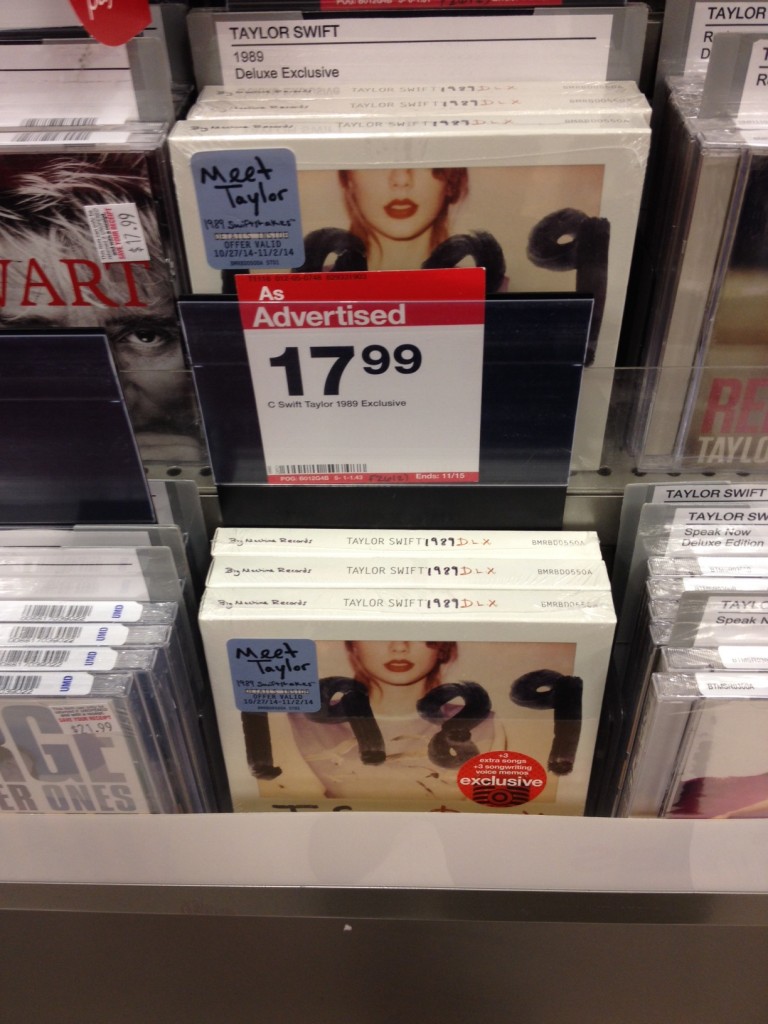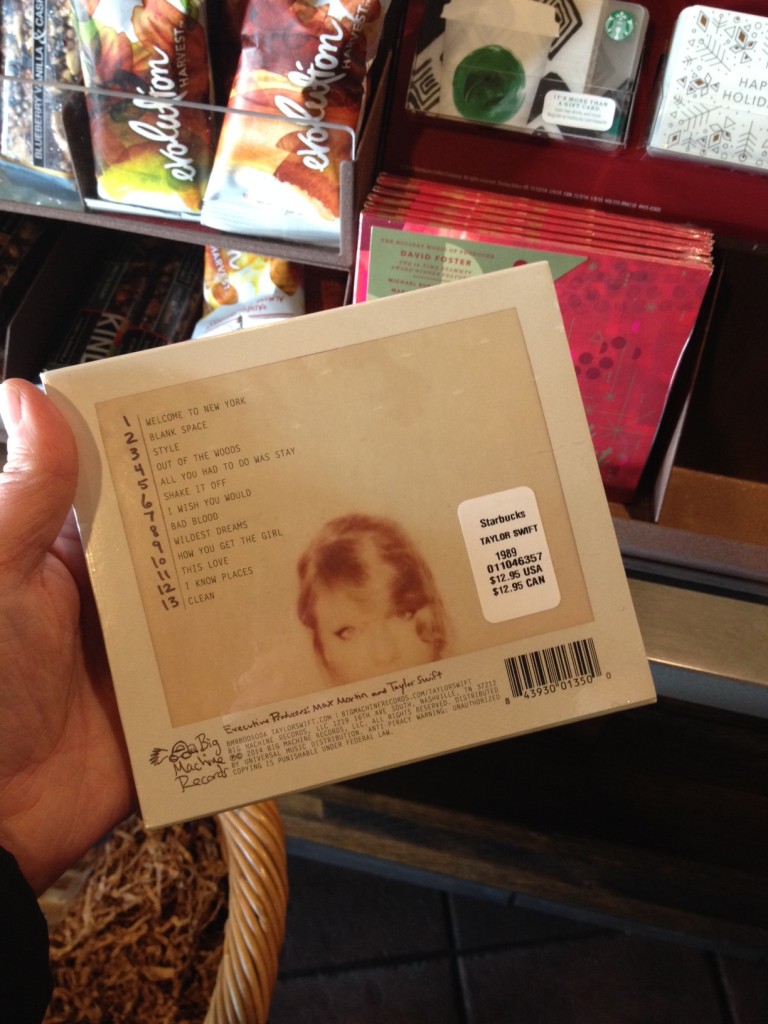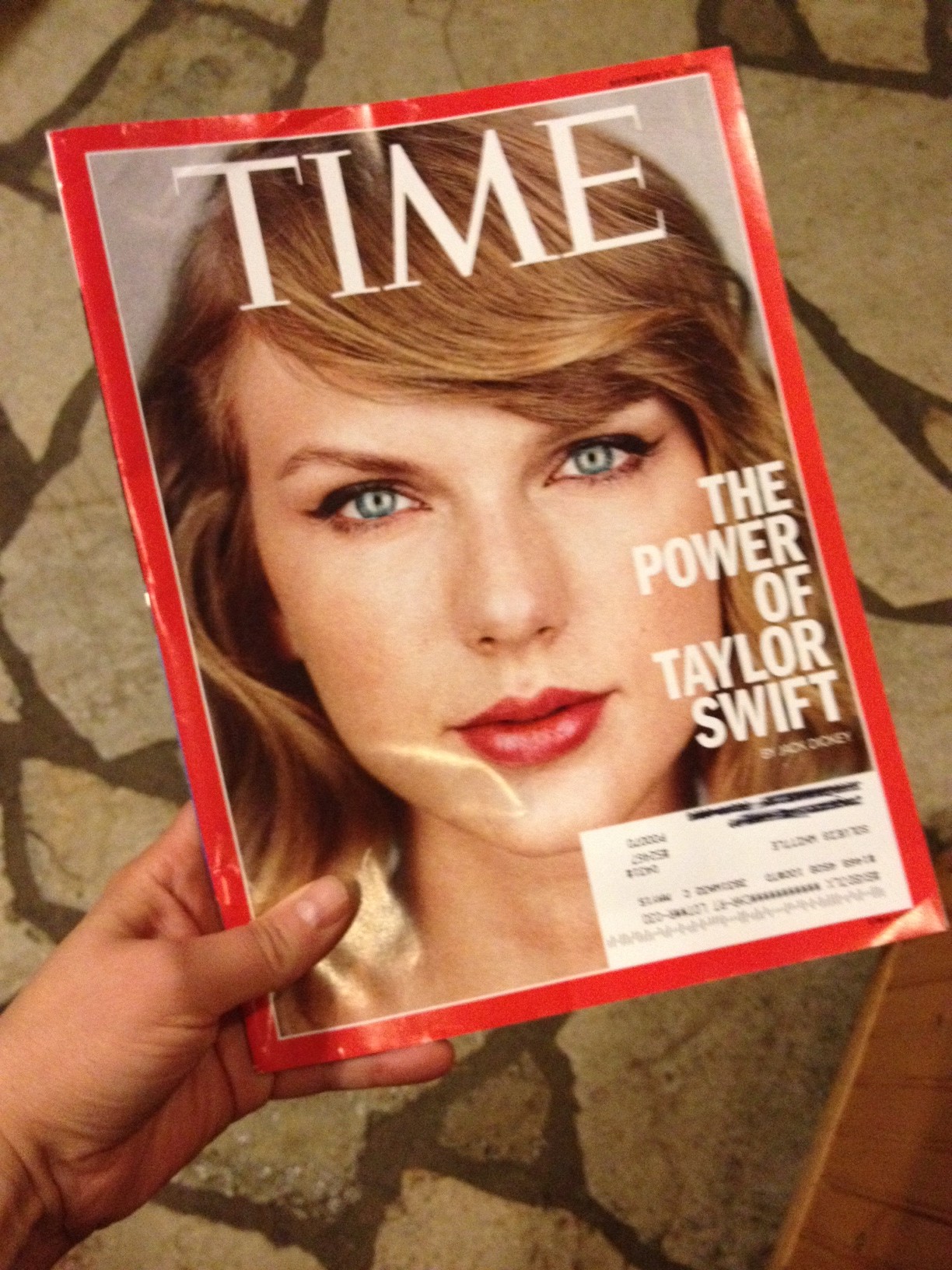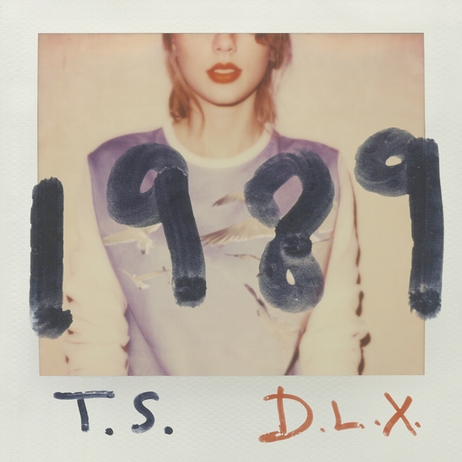Almost exactly two years ago, I wrote a blog post called 8 Things Indie Musicians Can Learn From Taylor Swift’s Red Release. That post has become one of the most popular on my blog, so I thought it appropriate to do a follow-up regarding the release of Swift’s newest album, 1989. Plus, analyzing and writing about the dynamic marketing duo of Taylor Swift and Scott Borchetta is downright fun. (If I were a graphic artist I would have a picture here of Borchetta in a Batman outfit and Swift as Robin).
The release of Swift’s 2012 Red album was a remarkable success from a marketing perspective. It propelled Swift from country into the mainstream pop market and made her one of the most powerful artists in the industry with a large and loyal fan base.
This year’s 1989 album also did not disappoint. Swift topped even her own record (no pun intended) with 1.29 million copies of 1989 sold in its first week (as compared to 1.21 million copies of Red in its first week after release). While selling 80,000 more units in Week 1 doesn’t seem like a huge accomplishment, remember that overall, the music industry has shown a significant decline in sales in recent years. Until the release of 1989, 2014 looked to be the first year no single artist album would go platinum (sell over a million copies). Sales of CDs for the first half of 2014 were down 19 percent from the year before, to 56 million, and even digital downloads declined by 14 percent in the first six months of 2014 (RIAA figures). 1989 comprised 22% of the entire US album sales the week of its release. In a declining industry, this was no small accomplishment.
[Tweet “1989 comprised 22% of the entire US album sales the week of its release.”]
As I did with my first article, it’s important to consider what the marketing goals were likely to have been for this release. In 2012, I proposed the marketing goals for Red were to expand Swift’s fan base beyond the country demographic into a broader demographic. I think the goals for 1989 were different: in this case, to maximize total net profits for the release. I mean, isn’t everyone already a Taylor Swift fan? Do we really need more Taylor Swift fans? (See Saturday night’s perceptive fake ad for Swiftamine for proof of her expanded demographic.) OK, just kidding. Sort of.
So now that virtually every person on the planet is in the Taylor Swift target demographic, how could Scott Borchetta and Big Machine Label Group squeeze the maximum amount of money from each fan? Maximizing total net profit isn’t easy. It means playing a delicate and complex game whose goal is to maximize unit sales while also maximizing per unit profit, all while balancing digital and physical sales, timing, and a desire not to piss off fans. Much of the press coverage has focused on the Swift/Spotify discussion and some have questioned whether it was the best financial decision for Swift (principally Spotify CEO, Daniel Ek) to pull her catalog from Spotify, yet it seems in the end Swift and her team have likely pulled off some very impressive sales (and profit) numbers.
[Tweet “How could Scott Borchetta squeeze the maximum amount of money from each fan?”]
Beyoncé’s 2013 “visual album” release in late 2013 showed that the best strategy to maximize profit is to maximize physical and download sales early, and create a compelling multi-media retail package. Borchetta and Swift did basically the same thing, they just built momentum for the release months in advance.
Even though many have correctly stated that Big Machine Label Group and Swift are a marketing juggernaut that cannot be emulated by indie artists, I still think there are a few important marketing principles that we can learn from them:
- Be Involved In Your Own Marketing. This was the year we all realized that Taylor Swift actually does make marketing decisions about her own music. She’s not, in fact, the empty-headed blonde artist who blindly turns every marketing and branding decision over to the nice, kindly, fatherly older man/Svengali at her music label. In this respect, she shares more with Amanda Palmer and Macklemore and Ryan Lewis (symbols of DIY indie music marketing) than Miley Cyrus, Rhianna or Beyoncé. I gained new respect for Swift this year when I read some of the press about 1989. While there is no question that Scott Borchetta and his team at Big Machine are brilliant marketers, there was plenty of interview material that revealed that Swift is not only intimately involved in critical marketing decisions, such as the one to pull her catalog from Spotify, she is also (reportedly) responsible for some of the genuinely creative marketing ideas. As an indie artist, every aspect of your marketing affects your image and your brand. Like Swift, make sure you are involved in every major decision, every message and PR talking point, and every co-branding decision. These can affect not only your sales, but how you are perceived by fans now and in the future. [Tweet “Be involved in every major decision, every message, every co-branding decision”]
- Stand For Something Bigger. Speaking of PR talking points, the release of 1989 quickly became all about the Spotify and streaming music debate. This was a great tactic. With Red, the talking points and subsequent long lead press articles (print magazine profiles, etc.) were all about Swift’s personal life and dating habits. This narrative fit both where Swift was at personally, as well as the theme of the Red album (love and broken hearts). The theme of the PR around 1989 was much, much bigger, and much more mature. It began with the groundwork laid in July 2014 in Swift’s Wall Street Journal op ed. That was just the opening shot. With the PR talking points for 1989, Swift suddenly became the spokesperson for the struggling musician who is seeing his or her projected revenue from a career in music decline precipitously due to streaming. Oh, and the music industry as a whole is going to hell in a hand basket on the backs of all of us creatives and our “free” content (music). Wait… what? How did one of the wealthiest pop stars of the decade suddenly become the poster child for all starving indie artists, our knight in shining armor tilting at the windmills of Silicon Valley tech decadence? [Tweet “Your release messaging should transcend you as an individual artist.”] This was a brilliant PR campaign which hit a nerve in both the press and the artist community. It was covered by NPR and CNN – my goodness! The Swift messaging campaign was successful in part with the press (remember, all press is free advertising) because the subject of how musicians can continue to make a decent profit in a distribution model that is moving from ownership to rental (streaming) was already a hot one. Borchetta just took it, articulated it and focused it with Swift as the appealing mouthpiece. How can we learn from this? Remember that there are hundreds of thousands of press releases about albums every year. In order to get a press article written, you or your album (or single) has to have a compelling story that goes beyond just the music. Whether it is a charitable cause, a personal interest story such as a physical health challenge, some link to celebrity, or, in Swift’s case, a music industry hot button, your release campaign messaging should transcend you as an individual artist.

- Create Something Unique To Market With The Physical Release. I am not going to argue that windowing a release by keeping it off Spotify is something indie artists should emulate. I think the question of whether streaming is good or bad for artists is a complex one. While Taylor Swift is in a position to capitalize on the issue for marketing purposes, most indie artists are not (see this article for a balanced case study of two indie UK artists who have taken different approaches to putting their music up on Spotify – both with very good arguments). While it may (debatably) have increased profits for Swift to pull her catalog from Spotify, I don’t think it is a good move for indies. We have different marketing problems than Swift. We should look at streaming as a promotional cost of doing business, like advertising, not as a sales or distribution outlet. Although I am skeptical of the articles which claim Spotify and other services are great for discovering indie artists, I still think it’s important for indie artists to ensure their music is on Spotify at the time of release for the sake of fans, press, reviewers, and general industry credibility. So I don’t recommend indie artists windowing a release or boycotting Spotify. [Tweet “Create something extra beyond just the typical album”] BUT I do think creating a unique physical product with premium content, as Swift did, is the way to make more money up front. A premium physical product which you can sell at your CD release party and directly off your website will have a much higher margin and thus bring in more revenue up front. Swift’s marketing team created the “candid Polaroids” included with the album (which fans could buy “exclusively” at Target for $17.99), each of which had a handwritten line from one of the songs at the bottom of the shot. There is also a tie-in to a purple long-sleeved shirt, available on her website for $60 (ch-ching!). As always, Swift used social media brilliantly, and the Polaroids caused a lot of conversation online with her fans which undoubtedly drove a sense of value and urgency, and thus encouraged physical sales. On a side note, I first saw 1989 for sale in my local Starbuck’s for $12.99 (same album, but for less than in Target). “Non-traditional” distribution outlets such as Starbucks, Amazon and concert venues now sell more albums than “traditional” outlets such as Target and other chain stores, at close to 14% of album sales. Note that download stores comprise 44% of sales in the overall music industry, which means iTunes is still going strong. Again, what all of does this mean for us indie artists? Create something extra beyond just the typical album and offer it for sale at your release party, tour stops, and on your website. Exploit non-traditional outlets such as local businesses (yoga studios, cafes, venues, wine bars) if you have a good relationship with the proprietor. Create a buzz on social media that will motivate your fans and drive traffic to these alternative distribution outlets.
- Coordinate Your Launch PR With Your Distribution Availability. As with Red, Big Machine and UMG’s distribution arm were perfectly in synch for the 1989 release. I learned during my time at Microsoft marketing software releases that it’s critical to have a well-planned and impeccably timed launch. Everything needs to be in place and designed to peak at launch for maximum sales – press, physical channel availability (purchase), Facebook or Google advertising, radio airplay (perhaps you have paid for a radio promotion plan to college or local stations) and your launch event (CD release party). The PR offensive by Big Machine was incredibly well-planed in advance and impressively on message. Swift was on the cover of Time (“The Power Of Taylor Swift”) and Bloomberg Newsweek (“Taylor Swift IS The Music Industry”) the same week, and there were numerous smaller articles published to coincide exactly with the release. The PR narrative caught Spotify off guard, which then created an entire month of public fencing between Swift/Borchetta and Ek in the media over the subject of streaming. Swift’s story line dominated the press for weeks, and so this kept her name and the name of her album front and center in the news. Only in the last week has Spotify been able to regain some equilibrium with a few positive articles in the New Yorker and an editorial by Ron Pope on Billboard about how he made $250K from streaming. Make no mistake: none of this PR offensive by Swift and Big Machine happened overnight. This theme of taking on streaming as the evil destroyer of the music industry and these interviews and press stories were planned well in advance. At the same time, the album had to be pressed and shipped and staged for retail sales. [Tweet “Make sure your album is available through iTunes and other download stores at release”] Often, indie artists focus all their creative energy on just getting the album to a distributor like Tunecore or CD Baby. Album art and liner notes, uploading mastered files, etc. – it’s a big effort. Then, the day after uploading it, we begin thinking about marketing our albums. Instead we should be thinking out the marketing campaign in advance and executing it to coincide with having the album available for purchase. It’s better to have the album finished and uploaded to the distributor and then sit on it while you get all the rest of the marketing lined up. That means sending out pre-release copies to reviewers well in advance of release, and lining up bloggers and other press stories so they come out at the right time. Having a CD release party can be a great way to get fans involved and buying copies, and those take weeks of preparation and planning. A Kickstarter campaign can even be considered a lead-in marketing event, because it pre-sells the CD and builds buzz among fans, so it should be timed to end relatively close to the release date. Having terrestrial and internet radio interviews and spins are also great PR activities to build buzz. We used to call this building momentum, or “mo”, for the release. In Swift’s case, in addition to impeccable timing between her PR and physical album availability, she has a tour planned to start May 2015 (pre-sales tickets announced and available November 4, 2014), which is projected to sell out. Swift also had television talk show appearances and live performances lined up such as at the AMAs, all well-timed in advance to give her extra TV and traditional media visibility. As an indie artist, you probably don’t have an entire PR team scheduling your many radio and television appearances, but try to coordinate any PR activities, appearances or shows, tours and interviews, to build to your launch – and stick with consistent messaging. Make sure your your album is available through iTunes and other download stores, as well as Spotify and Pandora and other streaming distributors at launch. There is no excuse, this is super easy to do via the standard distribution vehicles (CD Baby, Tunecore, etc. You can also do Bandcamp and Gumroad and sell merchandise directly from your website).

- Release And Market A Notable Single First With A Music Video. Swift’s team released Shake It Off in August 2014, well ahead of the album release, and promoted it hard online with an integrated digital, co-branding campaign to sell complimentary products such as Keds and Swift’s perfume. Note that Shake It Off was not released on Spotify, but at the time this wasn’t the big news it became a few months later. All the components of the upcoming album release were telegraphed to the industry in plenty of time for press and distribution to see it coming. And don’t forget the 1980s workout meme which perfectly paired Shake It Off with an old aerobics video. Indie artists are even more nimble than a bigger artist like Swift. We can create a music video for a single, release it to fans, and market it ahead of time just as Swift did – for a lot less money. The single music video that catches the attention of press and fans is a well-tested method which has been responsible for the breakout success of many indie artists. This is an area where indie artists can really shine. We can be creative and even outrageous. In the 21st century, we can and must create multimedia content other than our music (videos, books, visual art) which will help draw attention to us and our album. [Tweet “We can and must create multimedia content other than our music”]
Taylor Swift has a brilliant marketing team working for and with her to market 1989. She also, undoubtedly, has a big marketing budget. Nonetheless, we can take away some valuable lessons from the release of 1989 and adapt them to help us market our own indie releases.
As always, I welcome comments and critique. Share your successful (or unsuccessful) marketing tactics for album releases, and join the conversation!





3 comments
Bonjour!
Great article, helpful and with great tips. Smart approach to things. Always interesting to learn from those big “block buster” artists. It’s not a surprise that TS is so popular. She seems very business savvy.
What I see as the biggest challenge for an indie artist point of view is to be able to do all of that on your own. TS has an entire team working for her. When you do things alone (because I can’t always afford to hire someone), it can become more of a challenge to manage your time, decide where to invest a little money, make the right strategic decisions, etc…
Thanks for helping guys like us,
Eric
Amazing analysis, Solveig. There’s really nothing to add. You covered it all!
Executing on a plan like this is not easy (nor is it easy to come up with the right ideas), but certainly we are all capable of following Taylor’s example and creating our own buzz!
Thanks for the kind words, David, and thanks for leaving such a nice comment on the post! Cheers!